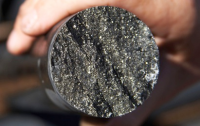Nickel prices for stainless steel are rising and reached a two-year high in early May 2014. Bruce Wheeler of Star Stainless pointed out that “since January nickel has risen 35%, making it the best performing metal of the London Metal Exchange.”
Differing analysts predict higher and lower nickel prices in the coming months, but already there is “one thing for sure, the world of stainless fasteners will begin to see higher prices and longer lead times,” Wheeler told FIN. “The recent surge of nickel prices has prompted heavy purchasing from the serious stainless buyers causing producers to become very busy and lead times to stretch out.” pricegrid
Wheeler cited the January export ban of unprocessed nickel laterite ore from Indonesia as starting the nickel price increase. “Combine this with trader speculation of the current situation taking place in Russia and prices have jumped significantly in the last 90 days,” Wheeler told GlobalFastenerNews.com.
Russia is home of Norilsk Nickel, which is the world’s largest miner of nickel and palladium, Wheeler noted.
Another factor is the Ukraine crisis, which has buyers worried about supply from Russia.
FT.com added that a mine shutdown in New Caledonia due to a spill and positive trade data from China also are driving up the nickel price. Nickel buyers in China are “scrambling to secure material for their processing plants” leading speculators to rush in, reporter Xan Rice of FT.com wrote.
Vale SA halted production at its Goro plant in New Caledonia. The mine was anticipated produce 40,000 tons of the world’s two million tons of nickel during 2014. Glencore Xstrata’s Koniambo mine in New Caledonia was producing at a rate below its 26,000-ton forecast.
Nickel for three-month delivery on the London Metal Exchange rose as high as $19,786 a ton May 8, 2014 – topping a peak in March 2012. “The market wants to be long so any sort of bad news acts as a catalyst,” analyst Colin Hamilton of Macquarie told FT.com.
“Nickel is the one commodity with tangible raw material constraints that people can see at this time.”
Indonesia supplies up to a quarter of global nickel production and the export ban is comes from high-grade Indonesian ore. The export ban is unlikely to be lifted analysts told FT.com. Most of the Indonesian nickel goes to China to be processed into nickel pig iron.
China’s inventories “are expected to run out later this year. There is no alternative supply to the Indonesian ore,” according to FT.com.
The nickel market frequently has significant price swings. For example, there was a four-fold price increase from late 2005 to May 2007. By the end of 2008 it was back down.
“We don’t yet know the seriousness of the Goro incident or how long the suspension will last,” said analyst Stephen Briggs of BNP Paribas told FT.com. “But in this market it does not take much to push nickel up.” ©2014 GlobalFastenerNews.com
Courtesy London Metal Exchange
Nickel 8% of Volume, But 60% of Stainless Cost
Excerpts from estainlesssteel.com on the history of nickel:
The global nickel market is dependent upon stainless steel production and stainless steel prices are likewise dependent on the price of nickel.
• Though stainless is mostly made of chromium, stainless pricing reacts primarily to nickel as it makes up 60% of cost even though it is only 8% of SS 304.
According to a historical summary of nickel by estainlesssteel.com, nickel was discovered in 1751, but had limited value until 1820 when it was discovered nickel could strengthen iron. In 1885 the U.S. military found nickel steel create superior guns.
• Wars increase nickel demand and during the Korean war, U.S. production fell short of wartime demand. The U.S. government took control of domestic production until 1957.
• Canada dominated nickel production as the Vietnam war ramped up, but 1969 labor strikes cut production and new mines and plants opened in Australia, Dominican Republic and New Caledonia.
• Nickel became the 7th medal to be traded on the London Metal Exchange in 1979.
• In 1987 stainless steel usage jumped and nickel demand and in Q2 of 1988 nickel produces set a record at $8.17 per pound.
• The collapse of the Soviet Union created a new producer, including today’s largest nickel producer – Norilsk Nickel.
• After a Canadian rebound in production, faster increasing demand in 1999 surprised producers. Canada’s Inco shut down again due to a strike and also lacked cash to re-open mines. Canada’s Falconbridge had smelter problems and Australia’s Western Mining Corp had to shut down for two months. An extended arctic freeze prevent Norilsk from shipping nickel. As demand exceeded supply, prices rose until 2000.
• The U.S. sold its stockpile of nickel in 1999 and is now 100% dependent on foreign imports and scrap.


